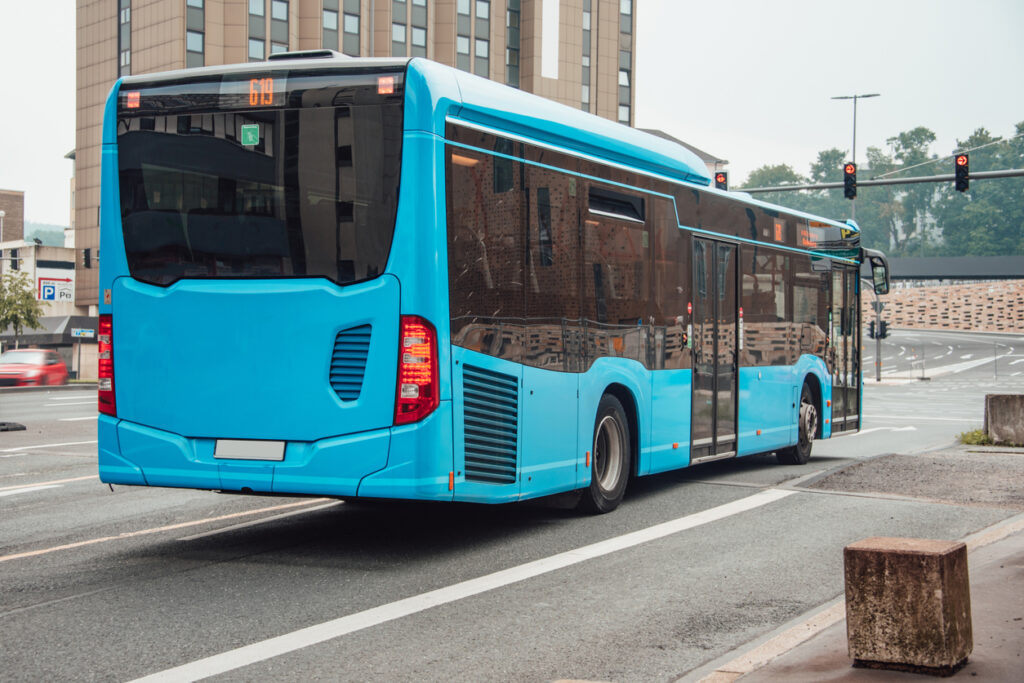The worldwide transportation industry significantly contributes to greenhouse gas emissions, which makes it a significant climate change contributor. Examining the difficulties and opportunities posed by transport in the era of climate change is crucial as the globe grapples with the pressing need to address the climate issue. In this article we explore how the transport industry has evolved over the last few years in an attempt to lessen its impact on the environment.
The challenge of reducing emissions
According to the European Environment Agency (EEA), the transportation sector accounts for around a quarter of the EU’s greenhouse gas (GHG) emissions, whilst also causing noise pollution, air pollution and habitat fragmentation. Furthermore the EEA states that it is the only major economic sector that has seen an increase in GHGs since 1990. According to the organisation, between the years of 2000 and 2019, transport has seen the following surges in demand:
- A 20% rise in passenger travel.
- An 86% rise in air travel.
- An 18% increase in car transport.
- A 22% increase in freight transport.
This meant that action needed to be taken, with the EU aiming to be carbon-neutral by 2050. As transport demand rises, it has a knock-on effect on carbon emissions, so the only answer was to create innovative ways to reduce the impact that transport has on the environment, and encourage more people to walk, cycle and use public transport. How has the transport industry responded over the last few years and can we expect any new innovations?
Electrification

In the era of climate change, electrification is a critical method for achieving sustainable transportation. Electric vehicles (EVs) have the potential to completely change how we get around, drastically decreasing greenhouse gas emissions and our reliance on fossil fuels.
The fact that electric cars have no exhaust emissions is one of their biggest advantages. Unlike internal combustion engines, which burn fossil fuels, EVs employ motors that are driven by batteries or fuel cells, which produce no greenhouse gas emissions directly. This lessens the health hazards connected with car emissions and improves local air quality whilst also reducing air pollution.
When electric vehicles are charged using power from renewable energy sources, the environmental advantages of these vehicles are maximised. EVs offer the possibility of decoupling transportation from the consumption of fossil fuels as the electricity grid becomes cleaner and more renewable energy is integrated. This shift to vehicles driven by renewable energy cuts greenhouse gas emissions even further and helps create a more sustainable energy ecosystem.
One thing to consider about the electrification of our transport is the availability of charging infrastructure. To allay “range anxiety” worries and give EV owners confidence, governments, private businesses, and other stakeholders must invest in the development of charging infrastructure. To facilitate long-distance travel and daily commuting, charging stations have to be expanded in public spaces, workplaces, residential areas, and along roads. Improved charging infrastructure will boost widespread adoption of EVs and help meet the ambitious goals of decarbonisation.
Public Transportation

Public transportation plays a pivotal role in the shift towards sustainable transportation by offering efficient and affordable mobility to a greater number of people than a private vehicle. It has the possibility of hugely reducing GHGs and traffic congestion, which increases fuel consumption. Read below some of the key ways in which public transport can contribute to Europe’s goal of becoming carbon neutral:
- Lower emissions – Buses, trams, trains and underground systems can transport a larger number of people than individual cars. According to the UN, shifting from private cars to public transport could reduce an individual’s carbon footprint by up to 2.2 tons per year.
- Better fuel efficiency – Vehicles used for public transit are built for maximum capacity and fuel efficiency. For instance, buses and trains have a large capacity for passengers, which lowers the energy and emissions per person. Technology developments have also resulted in the creation of hybrid and electric buses, enhancing fuel economy and reducing pollutants.
- Reduced traffic congestion – Urban regions frequently experience traffic congestion, which results in lost time, increased fuel use, and increased pollutants. Congestion can be lessened by enticing more people to use public transport, which will improve traffic flow and decrease commuting times for both those who use public transport and those who still drive their own cars.
Check out our article on the cities with the most sustainable transport systems in Europe.
Human-powered Transportation

Human-powered transportation or active transportation includes walking, cycling and running. Active transportation has many advantages for people, communities, and the environment when it is promoted and prioritised. For example, it creates zero emissions, as no fossil fuels are required, contributing to better air quality.
In addition to this, human-powered transportation results in better public health. Obesity, heart disease, and diabetes are just a few of the chronic diseases that can be avoided with regular walking or cycling. Promoting active commuting as a regular habit can decrease sedentary behaviour, boost cardiovascular fitness, and create healthier communities. Active transportation is better for the environment, health and also kind to your wallet.
Use of alternative fuels

While electrification of vehicles has been a success so far, it’s not suitable for every mode of transport or context. For example, the aviation and maritime industries face challenges with electrification due to energy density and range or insufficient infrastructure. Ammonia is considered an ideal alternative fuel for maritime applications and it can be used as a direct replacement for fossil fuels in ships. It’s produced by using renewable energy sources in a process called green ammonia production, which guarantees a carbon-neutral fuel.
Other types of alternative fuels in use include biofuels, hydrogen fuel cells, and synthetic fuels. Biofuels are made from biomass, such as crop residue, algae or waste materials. Biofuels can replace or be used in conjunction with traditional fuels, lowering GHGs.
While some alternative fuels can help cut greenhouse gas emissions, switching to zero-emission fuels should be the ultimate objective. This involves the creation of renewable hydrogen and the advancement of cutting-edge technologies like carbon capture, utilisation, and storage (CCUS) and direct air capture to make sure that the process of producing alternative fuels does not produce a substantial amount of emissions.
Conclusion
Since the early 2000s, we have made significant progress in trying to limit mankind’s impact on the planet through transportation. Numerous innovations have allowed new technologies to be presented to the market, and in the future we can only expect these technologies to improve. However, some infrastructural changes might have to be made to accommodate the most effective innovations, of which we don’t know just yet. What we do know, though, is that we’re moving in the right direction, as more people are conscious of their own carbon footprint than ever before, and making more sustainable choices in their day-to-day lives.










